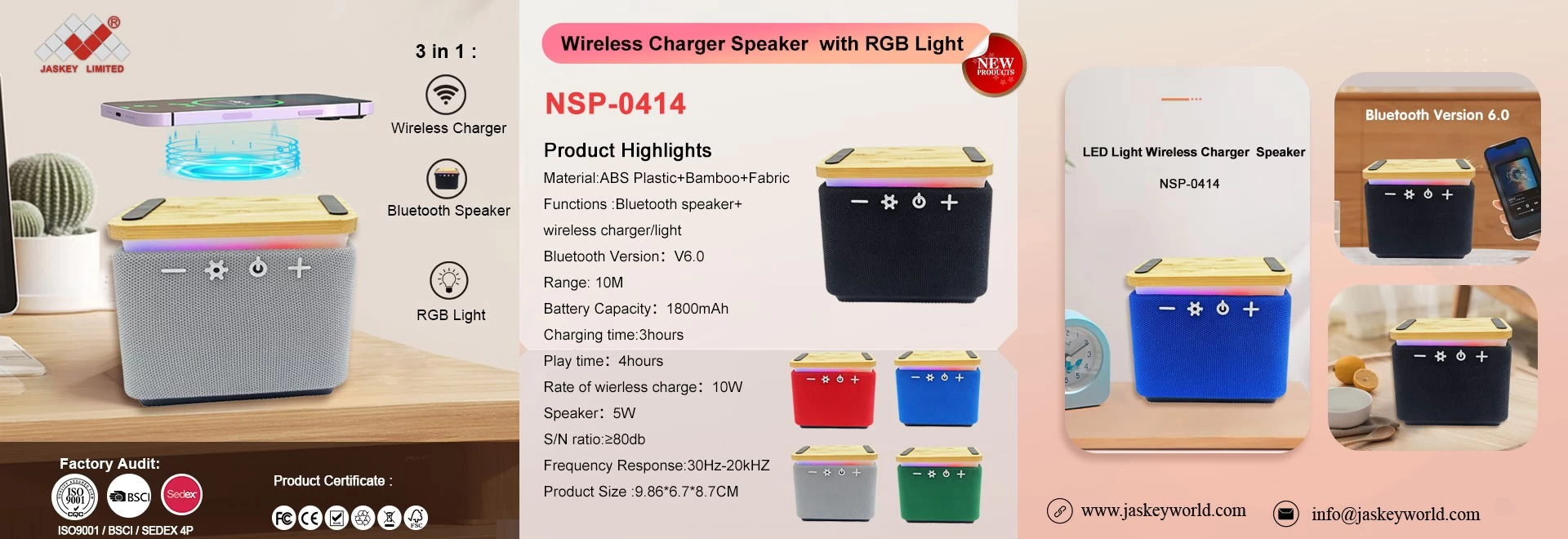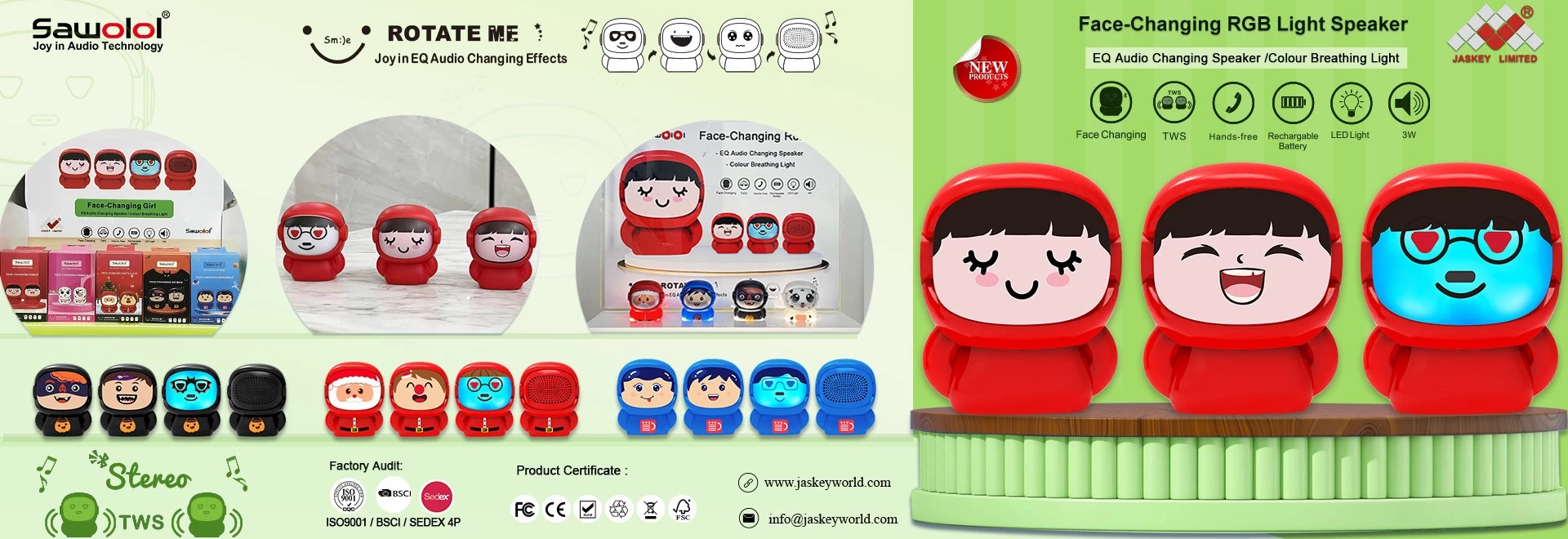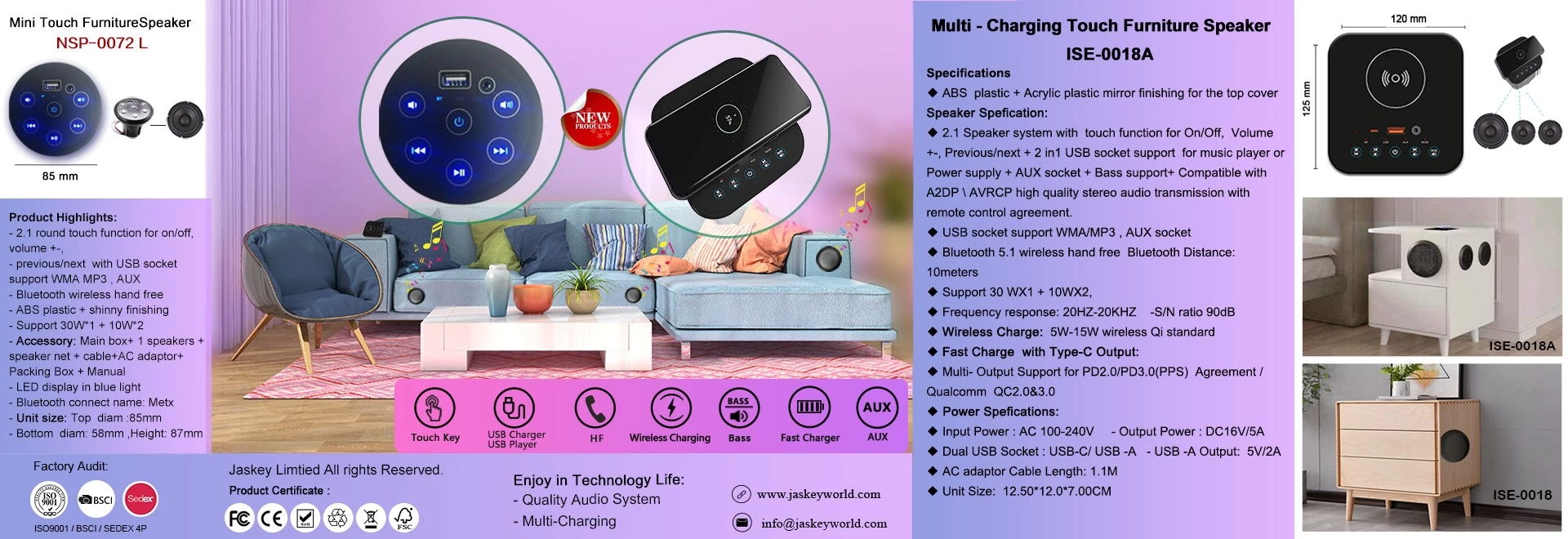Portable speaker type
In the 1980s, the CD (Compact Disc) format jointly developed by Sony (SONY) and Philips (PHILIPS) has perfect sound quality, but as a portable audio device, the size of CD walkman discs is large and indelible. Writing, portability, and users' independent choice of audio source are not ideal.
As the ancestor of the Walkman, Sony realized the existence of these problems and began to explore a brand-new audio technology that is more suitable for carrying around. In 1986, Sony successfully developed a single-write optical disc ---WO (Write Once Disc). In 1988, on the basis of WO, Sony invented a magneto-optical disc that can be written multiple times---MO (Magneto Optical Disc). The successful development of MO technology pointed out the direction for Sony. Using this technology, not only can The storage medium is repeatedly written, and the volume of the storage medium can be further reduced. In 1989, the R&D team led by Tsurumi Tsurushima of the Sony Audio Technology Department demonstrated a CD prototype product that can record at the audio exhibition that year. This disc uses the same technology as MO, which is the later MD (MiniDisc). The birth of) laid a solid technical foundation.
In May 1991, a brand-new storage medium, MD (MiniDisc), was announced. The size of the disc was customized to a diameter of 64mm and a recording time of 74 minutes. Compared with a CD, the area was only 1 of that of a CD disc. /4. In addition, ATRAC digital audio compression technology came into being. In order to ensure the portability of the final product and reduce the skipping caused by vibration during carrying, a shock-proof memory technology based on semiconductor media was also developed at the same time. These technological breakthroughs enable the future MD to combine the recordability of tapes, the high sound quality of CDs, high-speed random playback and fast search. At the same time, Sony clearly defines the difference between CD and MD Walkman, and CD is used for music in leisure time. Enjoy, and MD is to enjoy high-quality music anytime, anywhere.
In 2000, under the aggressive momentum of MP3 players, Sony introduced ATRAC3 encoding technology, named MDLP (MiniDisc Long Play). This improved encoding technology increases the compression rate on the basis of the original ATRAC encoding, and greatly reduces the space occupied by the ATRAC format files at the expense of a certain sound quality, so that the original MD discs can be accommodated according to different compression rates. 2 to 4 times the music. Its birth has injected new vitality into the MD Walkman market. As for the sacrificed sound quality, the average user can't distinguish it at all. It is very successful to use this loss of sound quality in exchange for the benefits of use.
In June 2001, Sony released the NET MD technology, which is a solution for the rapid production of MD discs. The MD Walkman with NET MD technology can directly download files in ATRAC or ATRAC3 format from a personal computer to MD discs. The recording method of MD has changed from a real recording to a file download similar to MP3 through the USB interface. The transmission, greatly shortening the time spent in making MD discs. NET MD technology is undoubtedly another important achievement in the history of MD development. 2. CD and CD/MP3 Walkman Many domestic manufacturers choose laser heads from Sanyo and Sony, not only because of its reasonable price, but also because of its strong disc reading and error correction capabilities, quality and technical support. In order to reduce the body thickness of the CD Walkman, in addition to choosing a thin bald head, the choice of electronic components is also very particular. The electrolytic capacitor needs to be small in size, and the chip can only choose a super large integrated scale multi-function circuit to match the peripheral components. With SMD SMD material, the printed circuit board is designed for double-sided routing, so that the thickness of the body can be made between 24-26mm. Another feature of CD and CD/MP3 Walkman is the addition of "electronic shock resistance" function, because the CD head is subject to a certain degree of vibration during the normal reading process, it will directly affect the focus and tracking of the head, which will deviate from the audio track. , So that the playing music becomes intermittent. After the anti-vibration function is added, the anti-vibration system first temporarily stores the read signal into a memory, and then takes the signal out of the memory for processing according to the needs of playback. When the body is shaken, the bald head cannot deviate from the sound track. At the moment when the signal is normally read, the signal stored in the memory can still be taken out for processing, so that the optical head has enough time to resume reading, thereby solving the phenomenon of "sound skipping" due to shock. The length of the "electronic shock resistance" time depends on the capacity of the memory used. The common ones are 10 seconds, 40 seconds, and longer shock resistance times, depending on the market's needs for products.
Player
The difference between CD and CD/MP3 Walkman is the decoding chip of the two. The decoding chip of CD and CD/MP3 Walkman must not only recognize the CD signal and decode it, but also recognize and decode MP3. Format data signal; CD/MP3/VCD portable player adds video signal recognition and decoding functions, and has a video output interface; because the working current when playing VCD discs is larger than when playing CD discs, it is recommended Use the supplied external power adapter when playing VCD discs. Jinye’s CMV320 series walkman is the latest product that integrates CD/MP3/VCD playback functions, infrared remote control, 9-screen browsing and playback and other functions. With the rapid development of digital information technology, more new functions will appear in portable audio products, and more types will enter the market. The "portable" signal sources mentioned above include both audio and video, which are products of earlier years, but today's portable signal sources are diverse. Products such as MP4 and portable DVD have become upstarts in the market.

speaker
Portable speakers are what everyone commonly calls portable small speakers. Most of them use SD/U disk and Line in three sound source input methods, and many of them will be equipped with FM radio, remote control and other functions. According to the user's mobile performance requirements, Part of the choice is a passive design, with a lithium battery or a replaceable battery. With the development of integrated chips and speaker units, portable speakers have become smaller and smaller, and their battery life has gradually increased. Domestic small speakers like to use BL-5C as a power supply solution, and extend the development and design of FM one-key search There are rich functions such as radio, synchronous lyrics display, touch screen, voice song on demand, and there are already mature voice on demand small speakers on the market. The accuracy rate of song on demand in Mandarin is high, and there are songs on demand in a few dialects. In the design of the cabinet, from the perspective of ergonomics, most small speakers adopt a flat and long strip configuration, which is easy to hold. From the perspective of cost and ease of processing, ABS engineering plastic shells are mostly used, and a few high-end products use metal shells.










